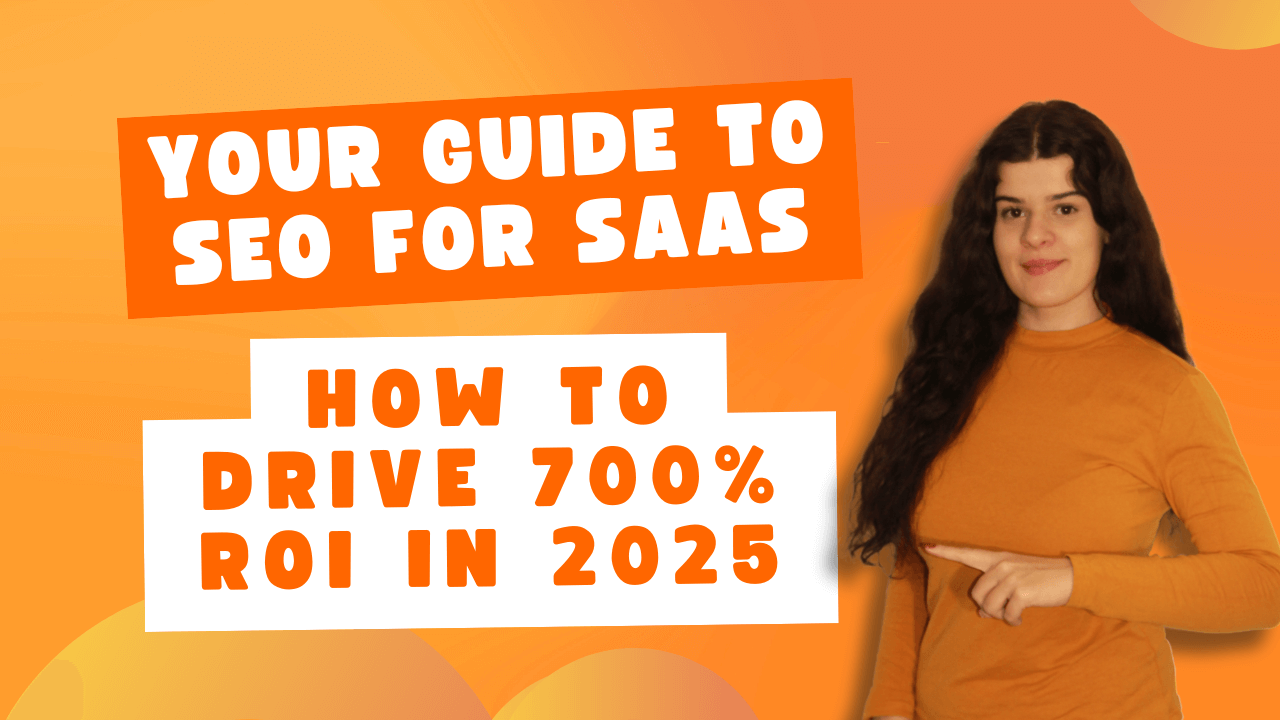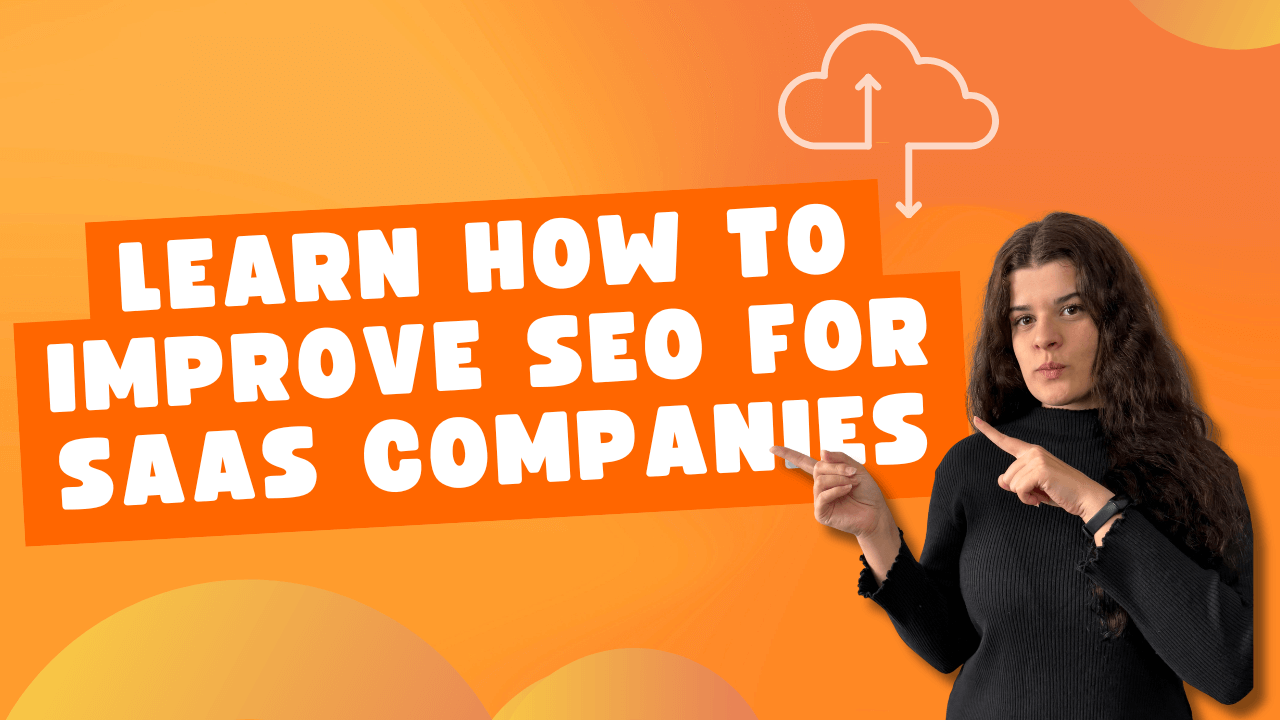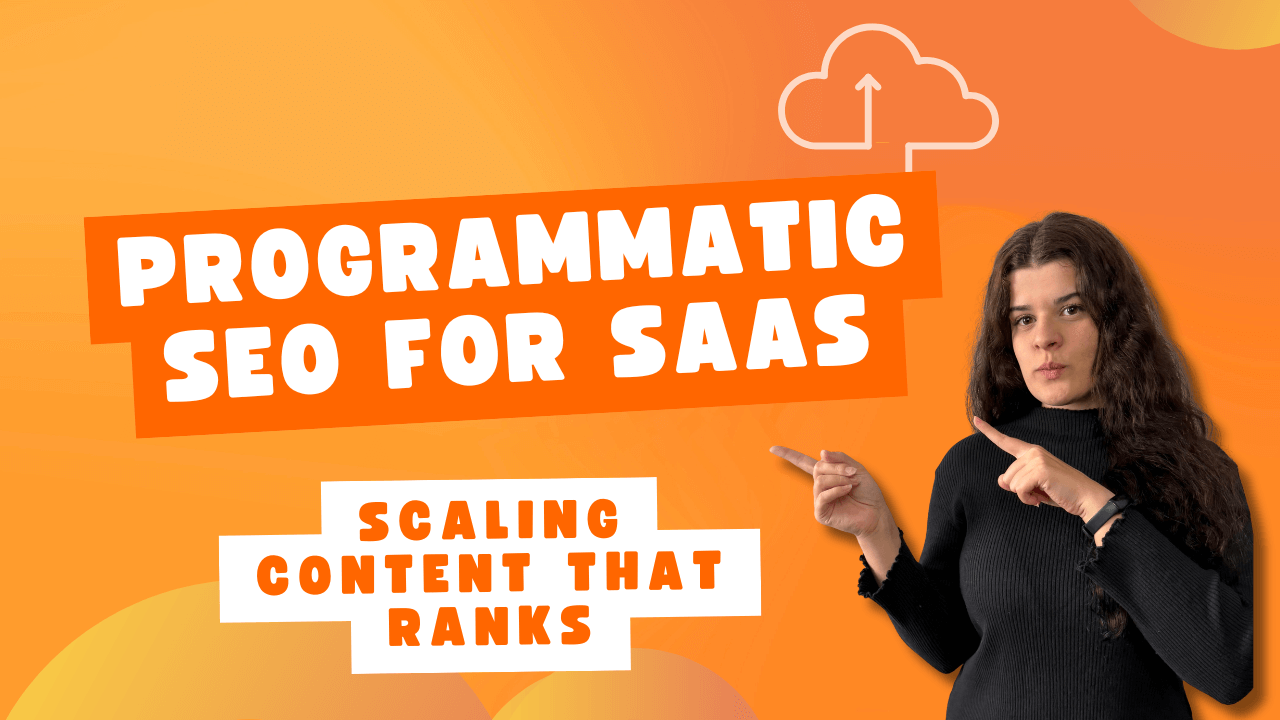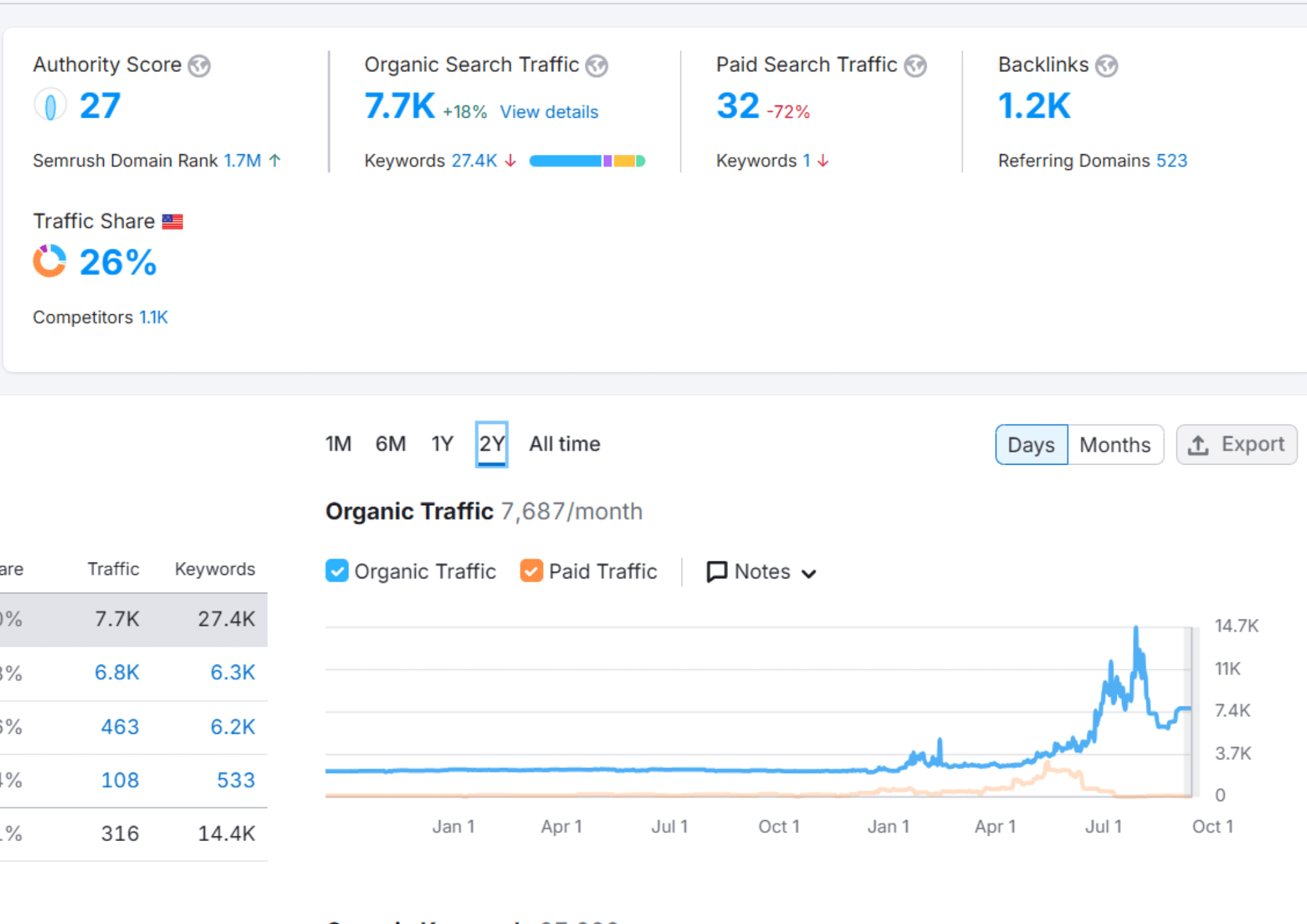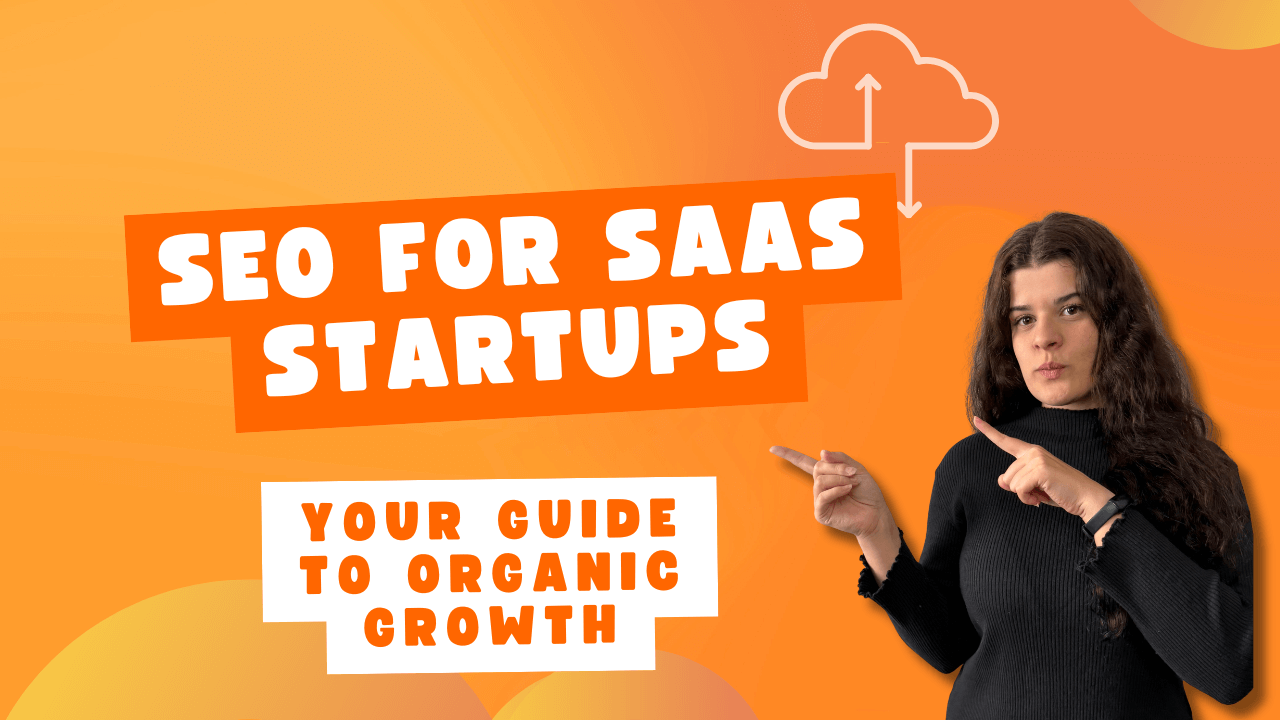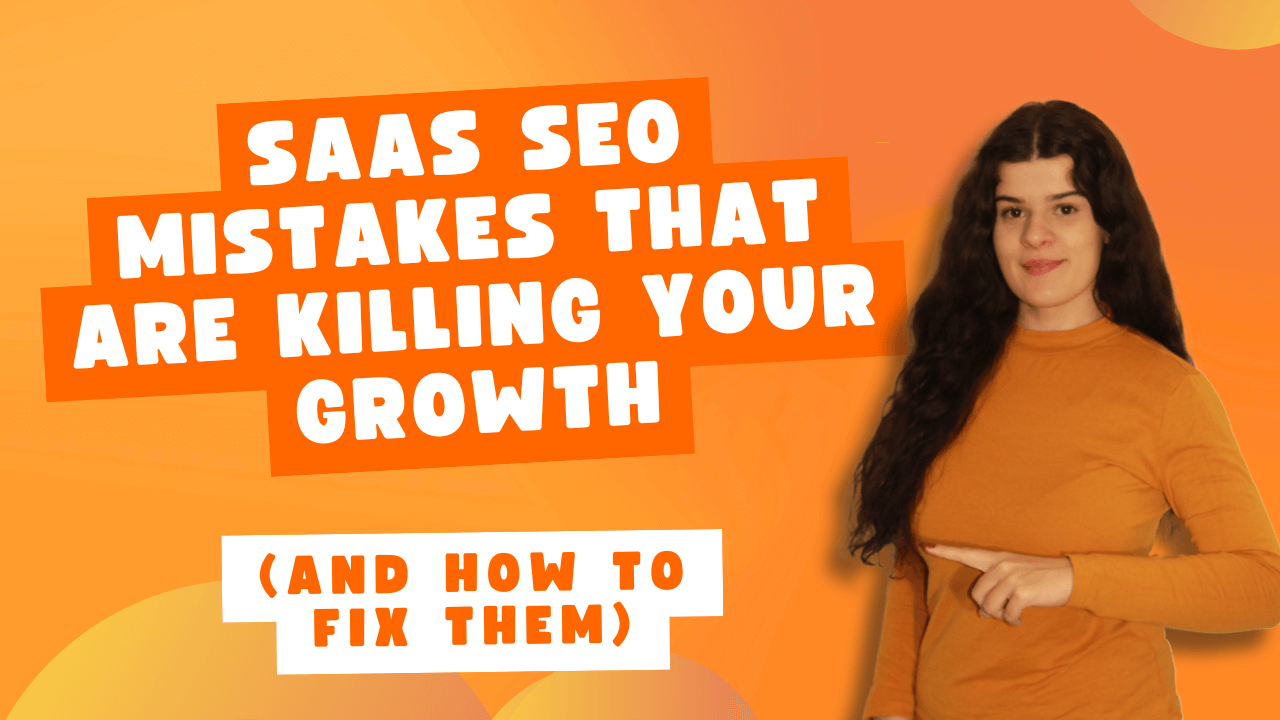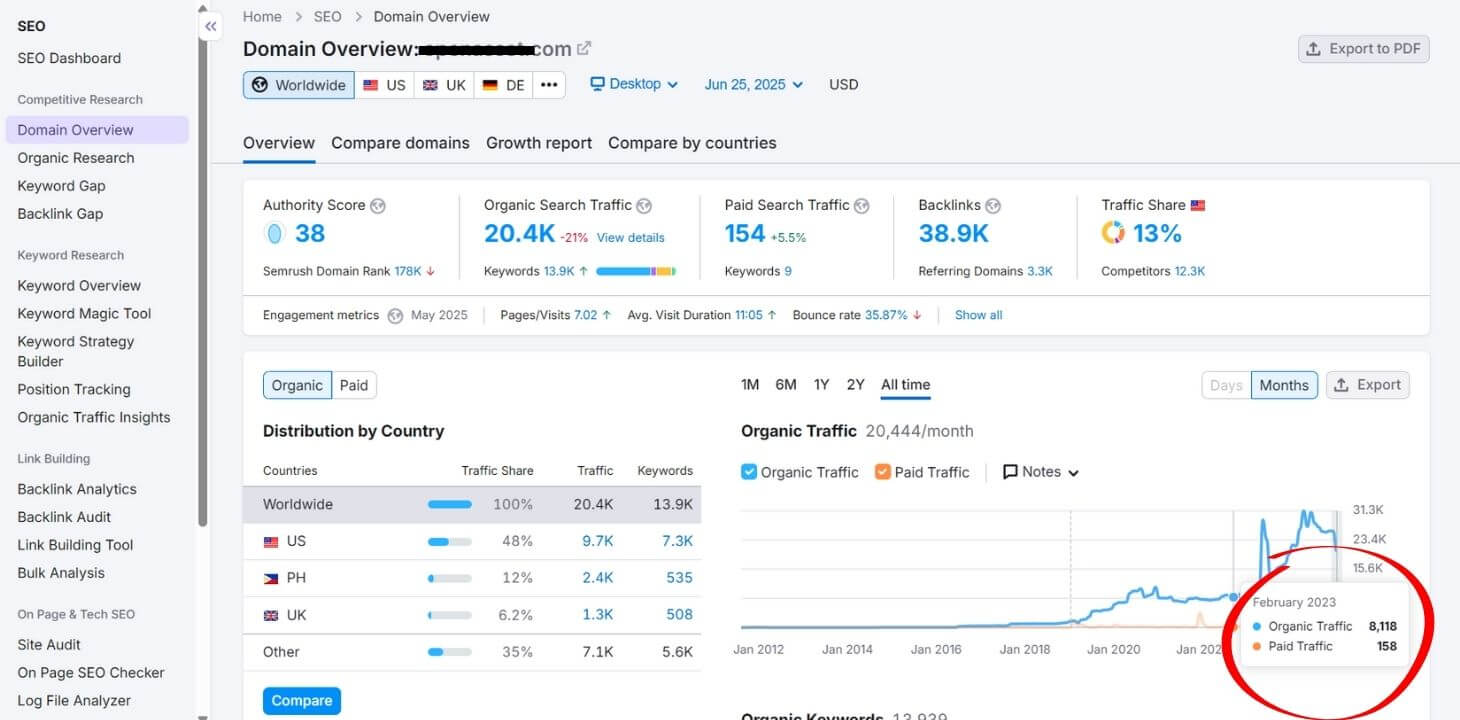SaaS companies that are achieving 702% ROI through strategic SEO for SaaS businesses are changing the industry. Not only are they offering software that people want to use, but they are using SEO to their best advantage.
Industry leaders such as Monday.com who is scaling from 100K to 1.2M monthly visitors, and Typeform, who is generating $3M annual lifetime revenue from search alone didn’t get to where they are by just word-of-mouth.
The SaaS market has exploded to $295 billion in 2025, with over 42,000 companies competing for visibility. Yet while 91% of SaaS businesses report improved website performance through SEO, many still struggle with implementation.
The winners are those combining technical skills with strategic content approaches, using programmatic SEO for scale, and optimizing for AI-powered search results that now appear in all our queries.
Table of Contents
Why SEO Is Your Company’s Secret Weapon
If you’re still questioning how important is SEO in a SaaS business, consider this:
68% of all online experiences begin with a search engine.
And when those searchers land on your site, they’re 8.5x more likely to convert than visitors from any other channel.
Compare that to your other options:
- Paid ads: You’re paying for every click, and the moment you stop spending, the traffic stops
- Cold outreach: Converting at just 1.7% on average (versus 14.6% for SEO leads)
- Social media: Great for brand awareness, but terrible for capturing high-intent buyers
That blog post you publish today could still be driving signups three years from now. No other marketing channel offers this kind of long-term leverage.

But It’s Not Just About Traffic
Here’s what many people get wrong about SEO. They chase vanity metrics like traffic volume or keyword rankings. But your board doesn’t care about your traffic. They care about pipeline and revenue.
Smart SaaS companies use SEO differently. They target buyers at every stage of their journey:
- Top of funnel: Educational content that helps potential customers realize they have a problem
- Middle of funnel: Comparison content that positions your solution against alternatives
- Bottom of funnel: Feature pages and case studies that drive demos and trials
This full-funnel approach is why companies using strategic SaaS SEO strategies see customer acquisition costs 87% lower than those relying solely on paid channels.
Building Your SaaS SEO Strategy: Start With Your Buyer, Not Keywords
Before you write a single piece of content or optimize a single page, you need to understand who you’re trying to reach. Understand their daily frustrations, their goals, and the language they use to describe their problems.
Let’s say you’re selling project management software. Your personas might include:
- The Overwhelmed Startup Founder: Juggling multiple projects with a small team, searching for “how to manage projects without a project manager”
- The Enterprise PM: Looking to replace clunky legacy tools, searching for “Jira alternatives for agile teams”
- The Agency Owner: Needs client-facing features, searching for “project management software with client portals”

Each persona has different pain points, uses different search terms, and needs different content. Your SaaS SEO content strategy should speak to each of them specifically.
Map Content to the Customer Journey
Once you know your personas, map out their journey from problem-aware to purchase-ready.
Stage 1: Problem Awareness
Your buyer realizes something’s wrong but doesn’t know the solution exists. They’re searching things like:
- “Why do projects always run late?”
- “How to track team productivity”
- “Project management best practices”
Stage 2: Solution Exploration
Now they know solutions exist and they’re comparing options:
- “Best project management software for startups”
- “Asana vs Monday.com vs ClickUp”
- “Project management software pricing comparison”
Stage 3: Decision Making
They’re ready to buy but need that final push:
- “[Your brand] reviews”
- “[Your brand] pricing”
- “How to implement [Your brand]”
By creating content for each stage, you’re guiding buyers through their entire journey.
Getting Your SaaS Site SEO-Ready with a Proper Foundation
Technical SEO for SaaS platforms is fundamentally different from other websites. You’re dealing with complex applications, user-generated content, and authentication systems that can trip up search engines.
The biggest technical challenges SaaS companies face are:
- JavaScript rendering issues: Your fancy React app might look great to users but be invisible to Google
- Duplicate content from user dashboards: Thousands of similar-looking pages that confuse search engines
- Crawl budget waste: Search engines spending time on login pages instead of your valuable content
- Slow load times: Complex applications that hurt your Core Web Vitals scores

Your SaaS SEO Checklist for Technical Excellence
Don’t worry, fixing these issues isn’t as complicated as it sounds.
Here’s your SaaS SEO checklist for technical optimization:
Page Speed Optimization
- Aim for sub-2 second load times (yes, it’s possible even for complex apps)
- Use lazy loading for images and non-critical JavaScript
- Implement a CDN for global performance
- Consider server-side rendering for critical pages
URL Structure
- Use descriptive URLs: /features/kanban-boards not /feature?id=123
- Keep your marketing site separate from your app subdomain
- Implement proper canonical tags to avoid duplicate content
Authentication and Access
- Ensure Googlebot can access your public pages without login
- Use robots.txt to block crawler access to user areas
- Create static versions of key feature pages for SEO
Schema Markup
- Implement SaaS-specific schema for pricing, reviews, and features
- Use FAQ schema for your help content
- Add video schema for product demos
Programmatic SEO for SaaS
Here’s where things get really interesting. Programmatic SEO for SaaS can scale your content creation without sacrificing quality.
Companies like Canva have mastered this by creating thousands of template pages, each targeting specific long-tail keywords like “Instagram story template for restaurants” or “LinkedIn banner for consultants.”
The key is finding scalable patterns in your business:
- Integration pages: “[Your product] + [Other tool] integration”
- Use case pages: “[Your product] for [Industry/Role]”
- Template libraries: “[Template type] for [Specific use]”
- Comparison pages: “[Your product] vs [Competitor] for [Use case]”
But keep in mind that Google’s latest updates penalize low-quality, templated content. Each programmatically generated page needs a unique value, not just swapped variables.
How to Write Content That Converts?
The biggest mistake in SaaS SEO content writing is creating content for content’s sake.
Every piece of content should have a clear job:
- Educational content: Build trust and demonstrate expertise
- Comparison content: Position your solution favorably
- Feature content: Show how you solve specific problems
- Case study content: Provide social proof and results
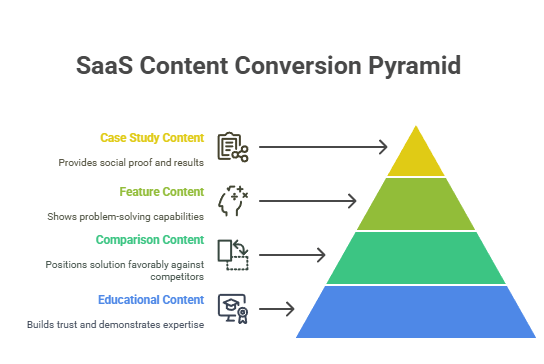
The Product-Led Content Approach
The best SaaS content shows how your product solves problems that your potential customers are having. This is called product-led content, and it’s the difference between a blog that drives traffic and one that drives revenue.
Here’s how to do it:
- Start with the problem: Address the reader’s pain point directly
- Provide genuine value: Give actionable advice they can use today
- Introduce your solution naturally: Show how your product makes it easier
- Include real examples: Screenshots, videos, and actual use cases
- Clear next steps: Make it easy to try your solution
For example, instead of writing “10 Project Management Tips,” write “How We Cut Project Delivery Time by 40% (With Real Client Examples).” Then show exactly how your tool enables each improvement.
How to Do Proper On-Page SEO for SaaS Businesses
Your SaaS on-page SEO needs to balance user experience with search optimization. Here’s how:
Title Tags That Click
- Include your primary keyword naturally
- Add power words that drive action
- Keep it under 60 characters
- Include your brand for bottom-funnel content
Meta Descriptions That Sell
- Focus on benefits, not features
- Include a clear value proposition
- Add social proof when possible (“Join 10,000+ teams…”)
- Use action-oriented language
Headers That Guide
- Use H1 for your main topic
- Break content into scannable H2 sections
- Include keywords naturally in headers
- Make headers benefit-focused, not keyword-stuffed
Internal Linking Strategy
- Link liberally between related content
- Use descriptive anchor text
- Create topic clusters around main themes
- Always link to relevant product pages
Choose Quality Over Quantity when Link Building
Those generic “10 link building tactics” articles don’t work for SaaS companies. You’re not competing with blogs, rather you’re competing with venture-backed companies with massive marketing budgets.
But the thing is that you don’t need thousands of links. You need the right links from the right sources.
SaaS-Specific Link Building Strategies
Let’s take a look at some of the best link building strategies:
1. Integration Partner Links
Every tool you integrate with is a potential link. Create dedicated integration pages and reach out to partners for mutual linking opportunities.
2. Free Tool Strategy
Build a free tool that solves a simple problem for your target audience. Canva’s color palette generator drives thousands of links naturally.
3. Original Research and Data
Conduct industry surveys or analyze your user data (anonymized) to create reports others will cite. “State of [Industry]” reports are link magnets.
4. Guest Posts That Don’t Suck
Forget generic guest posting. Target industry publications where your buyers actually read. Focus on tactical, actionable content that showcases your expertise.
5. HARO and Expert Roundups
Respond to journalist queries in your space. One good quote in a major publication is worth 100 low-quality directory links.
6. Product Hunt and Launch Platforms
Time your launches strategically across Product Hunt, Hacker News, and industry-specific platforms. The links are valuable, but the traffic spike can also earn natural links.
Taking Your SaaS Global with International SEO
Seeing traffic from other countries? It might be time to invest into SaaS international SEO.
Start by analyzing your current international traffic:
- Which countries show the most engagement?
- Are they searching in English or local languages?
- Do you have product-market fit in these regions?
Building Your International SEO Strategy
When building your international SEO strategy, try to look out for these 3 problems/opportunities.
- Choose Your URL Structure
For SaaS companies, subdirectories work best:
- yourproduct.com/de/ for German
- yourproduct.com/fr/ for French

This consolidates your domain authority while allowing regional targeting
- Localize Your Strategy
- Research keywords in each language (don’t just translate the text)
- Adapt your messaging for cultural differences
- Localize pricing and payment methods
- Update case studies with regional examples
- Ensure compliance with local regulations
- Technical Implementation
- Implement hreflang tags correctly
- Use local hosting or CDN nodes
- Create country-specific sitemaps
- Monitor international Core Web Vitals
The Pitfalls That Kill SaaS SEO Success
Even smart companies make these common SaaS SEO mistakes.
Here’s what to avoid:
1. Focusing on Vanity Metrics
Traffic doesn’t pay the bills.
Focus on metrics that matter:
- Organic trial signups
- Demo requests from organic traffic
- Customer acquisition cost from SEO
- Lifetime value of SEO-acquired customers
2. Ignoring Search Intent
Ranking for “project management” sounds great until you realize those searchers want a definition, not software. Match your content to actual buyer intent.
3. Creating Thin, Unhelpful Content
Google’s latest updates specifically target unhelpful content. Every page needs to provide genuine value, not just hit a word count. Alongside that, make sure to write only about the things in your niche, as this can de-index your pages as well, based on the newest Google algorithm as well.
4. Neglecting Technical SEO
That beautiful marketing site won’t help if Google can’t crawl it properly. Regular SEO audits for SaaS websites are essential.
5. Copying Competitor Strategies Blindly
Just because HubSpot ranks for everything doesn’t mean you should try. Focus on keywords that align with your actual product and audience.
6. Forgetting About Product-Market Fit
SEO can’t fix a product nobody wants. Make sure that you have PMF before scaling your SEO efforts.
SEO Metrics That Matter for SaaS Businesses
Your CEO doesn’t care about your Domain Authority.
Here’s what to track instead:
Business Metrics
- Organic MRR contribution
- Customer acquisition cost from organic
- Organic trial-to-paid conversion rate
- SEO ROI (revenue generated vs. investment)
Leading Indicators
- Organic traffic to high-intent pages
- Demo requests from organic sources
- Content engagement rates
- Brand search volume growth
Technical Health Metrics
- Core Web Vitals scores
- Crawl errors and indexation issues
- Site speed across devices
- Mobile usability scores
Setting Realistic Expectations for your SEO Objectives
Here’s a realistic timeline for your SEO strategy:
Months 1-3: Foundation
- Technical fixes show quick improvements
- Initial content starts getting indexed
- Little to no traffic growth yet
Months 4-6: Momentum
- Content begins ranking for long-tail keywords
- Organic traffic grows 20-30% monthly
- First organic conversions appear
Months 7-12: Scale
- Significant traffic growth
- Consistent organic pipeline contribution
- Positive ROI on SEO investment
Year 2+: Compound Growth
- SEO becomes a primary growth channel
- Minimal investment for maximum return
- Predictable, scalable customer acquisition
This is How Your 90-Day SaaS SEO Action Plan Should Look Like
Days 1-30: Foundation
Week 1: Assessment
- Run a complete technical SEO audit
- Analyze your current organic performance
- Research your top 5 competitors’ SEO strategies
- Identify quick win opportunities
Week 2-3: Technical Fixes
- Fix critical crawling and indexation issues
- Improve site speed and Core Web Vitals
- Implement proper schema markup
- Set up comprehensive tracking
Week 4: Content Planning
- Build detailed buyer personas
- Map keywords to the customer journey
- Create a 90-day content calendar
- Identify programmatic SEO opportunities
Days 31-60: Execution
Week 5-6: Content Creation
- Publish 2-3 high-quality pieces weekly
- Focus on bottom-funnel content first
- Optimize existing pages for target keywords
- Build internal linking between related content
Week 7-8: Link Building
- Reach out to integration partners
- Submit to relevant directories
- Begin guest posting outreach
- Launch any free tools or resources
Days 61-90: Optimization
Week 9-10: Performance Analysis
- Review organic traffic growth
- Identify top-performing content
- Analyze user behavior and conversions
- Adjust strategy based on data
Week 11-12: Scale
- Double down on what’s working
- Expand successful content formats
- Begin international SEO if applicable
- Plan next quarter’s initiatives
Next Algorithms and Surprises We Can Expect From Search Engines
Here are the 3 things you should look out for in this industry.
AI Is Changing Everything (But Not How You Think)
Yes, AI is changing the way we search and read information on the search engines. Does this mean SEO is dead? Absolutely…. Not.
ChatGPT, Perplexity, and Google’s AI overviews are capturing more searches. But this isn’t the death of SEO, but an evolution.
Winners in 2025 will:
- Create comprehensive, authoritative content that AI systems want to cite
- Optimize for answer engines, not just search engines
- Build genuine expertise and thought leadership
- Focus on unique insights AI can’t generate

Playing the Long Game with Enterprise SaaS SEO
Enterprise SaaS SEO requires patience and sophistication. Your buyers have 6-12 month sales cycles. They involve multiple stakeholders. They need extensive education and trust-building.
Your strategy must reflect this:
- Create content for each stakeholder (technical, financial, executive)
- Build comprehensive resource centers
- Develop ROI calculators and business case builders
- Showcase enterprise-specific features and security
The Rise of B2B SaaS Growth SEO
B2B SaaS growth SEO is becoming more sophisticated. It’s about building a complete growth system where:
- SEO feeds your content marketing
- Content marketing supports your sales team
- Sales insights improve your SEO strategy
- The cycle continues and compounds
These Tools Will Supercharge Your SaaS SEO
You don’t need every tool, but you need the right tools.
Here’s our recommended stack:
For Keyword Research
- Ahrefs: Best for competitor analysis and backlink research
- SEMrush: Great all-rounder with AI-powered insights
- Keywords Everywhere: Quick keyword data while browsing
For Technical SEO
- Screaming Frog: Deep technical audits
- Google Search Console: Direct insights from Google
- PageSpeed Insights: Core Web Vitals monitoring
For Content Optimization
- Clearscope: Content optimization based on top-ranking pages
- MarketMuse: AI-powered content planning
- Grammarly: Writing quality and clarity
For Rank Tracking
- Ahrefs: Track rankings alongside competitive data
- SEMrush Position Tracking: Detailed SERP feature tracking
- Google Search Console: Free performance data
But, like always, the best rated SEO tool for SaaS depends on your specific needs:
- Starting out? Google’s free tools plus Ahrefs Webmaster Tools
- Scaling content? SEMrush or Ahrefs for full capabilities
- Enterprise needs? Custom solutions like Conductor or BrightEdge
The easiest SEO tool for SaaS companies just starting? SEMrush’s Copilot feature provides AI-guided recommendations perfect for teams without SEO expertise.
Making SaaS SEO Work With Limited Resources
We’ve all been here, we have limited resources and want to invest in the best strategy.
The Reality of SaaS SEO for Startups
SEO for SaaS startups is tough. You’re competing against companies with 50-person marketing teams. You might have one marketer wearing twelve hats.
Here’s how to compete anyway:
- Focus ruthlessly: Better to dominate 10 keywords than barely rank for 1,000
- Leverage your advantages: You can move faster and be more creative than big companies
- Build in public: Document your journey for natural link building
- Partner strategically: Guest post, integrate, and collaborate
When to Consider White Label SEO
SaaS white label SEO services can help when:
- You need specialized expertise (like technical SEO)
- Your team is maxed out on capacity
- You want to scale content creation quickly
- You need link building support
Choose partners who understand SaaS specifically. Generic SEO agencies often miss the nuances of software marketing.
Do You Need Help with SEO for SaaS?
Doing SEO for SaaS companies isn’t about tricks or hacks. It’s about building a sustainable system that compounds over time.
Remember:
- Start with your customers, not keywords
- Fix technical issues that block growth
- Create content that genuinely helps buyers
- Build links through value, not volume
- Measure what matters to your business
- Stay patient—SEO rewards persistence
The companies winning with SEO in 2025 aren’t necessarily the biggest or best-funded. They’re the ones who understand their customers deeply, create exceptional content consistently, and optimize relentlessly.
Your SaaS has the potential to dominate organic search in your space. The question isn’t whether SEO works—it’s whether you’re ready to make it work for you.
Start with one piece of content. Fix one technical issue. Build one valuable link.
Then do it again tomorrow.
That’s how you build an SEO engine that drives predictable, scalable growth for years to come.
But if you want to focus on building and improving your product, and want to leave SEO to the real specialists, aka SEO Curly, then we encourage you to schedule a meeting with us.

